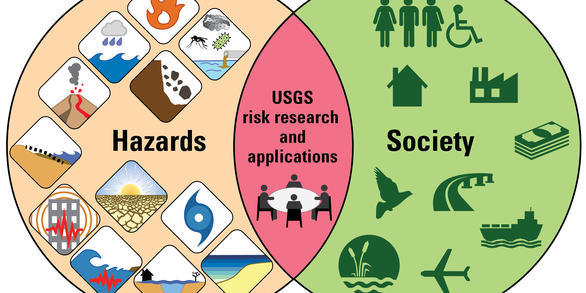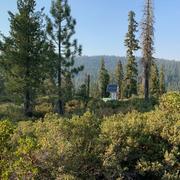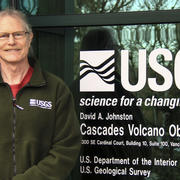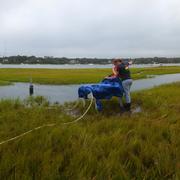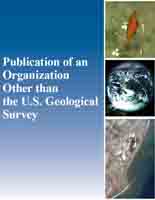Mission Areas
Natural Hazards
Every year in the United States, natural hazards threaten lives and livelihoods and result in billions of dollars in damage. We work with many partners to monitor, assess, and conduct targeted research on a wide range of natural hazards so that policymakers and the public have the understanding they need to enhance preparedness, response, and resilience.
Reducing Risk
USGS scientists develop new products to make science available to the public, emergency managers, and decision-makers. These efforts increase public safety and reduce risk and economic losses caused by natural hazards.
Learn MoreSubduction Zone Science
The most powerful earthquakes, tsunamis, landslides, and volcanic eruptions occur in subduction zones, where two plates collide and one is thrust beneath another.
Learn MoreNews
Federal Agencies Partner to Strengthen ShakeAlert Earthquake Early Warning Capacity Along the West Coast
A lone solar panel in the middle of California’s largest national forest is powering a seismometer able to detect Earth’s vibrations, a piece of the puzzle necessary to help protect life and property by providing critical seconds of warning that an earthquake is occurring and shaking is imminent.
New Scientist-in-Charge at USGS Cascades Volcano Observatory
The U.S. Geological Survey is pleased to announce the selection of Dr. Jon Major to serve as the new Scientist-in-Charge of the USGS Cascades Volcano Observatory.
Groundwater discharge impacts marine isotope budgets.
Groundwater is an important pathway for materials to flow from land to sea. This is particularly true for materials that are concentrated in groundwater due to chemical interactions between water and aquifer rocks as groundwater flows to the coast.
Publications
Modeling hydrologic processes associated with soil saturation and debris flow initiation during the September 2013 storm, Colorado Front Range
Seven days of extreme rainfall during September 2013 produced more than 1100 debris flows in the Colorado Front Range, about 78% of which occurred on south-facing slopes (SFS). Previously published soil moisture (volumetric water content) observations suggest that SFS were wetter than north-facing slopes (NFS) during the event, which contrasts...
Timilsina, Sujana; Niemann, Jeffrey D.; Rathburn, Sara L.; Rengers, Francis K.; Nelson, Peter A.Evaluation of simulated ground motions using probabilistic seismic demand analysis: CyberShake (ver. 15.12) simulations for Ordinary Standard Bridges
There is a need for benchmarking and validating simulated ground motions in order for them to be utilized by the engineering community. Such validation may be geared towards a specific ground motion simulation method, a target engineering application, and a specific location; the validation presented herein focuses on a bridge engineering...
Fayaz, Jawad; Rezaeian, Sanaz; Zareian, FarzinRapid sensitivity analysis for reducing uncertainty in landslide hazard assessments
One of the challenges in assessing temporal and spatial aspects of landslide hazard using process-based models is estimating model input parameters, especially in areas where limited measurements of soil and rock properties are available. In an effort to simplify and streamline parameter estimation, development of a simple, rapid approach to...
Baum, Rex L.

